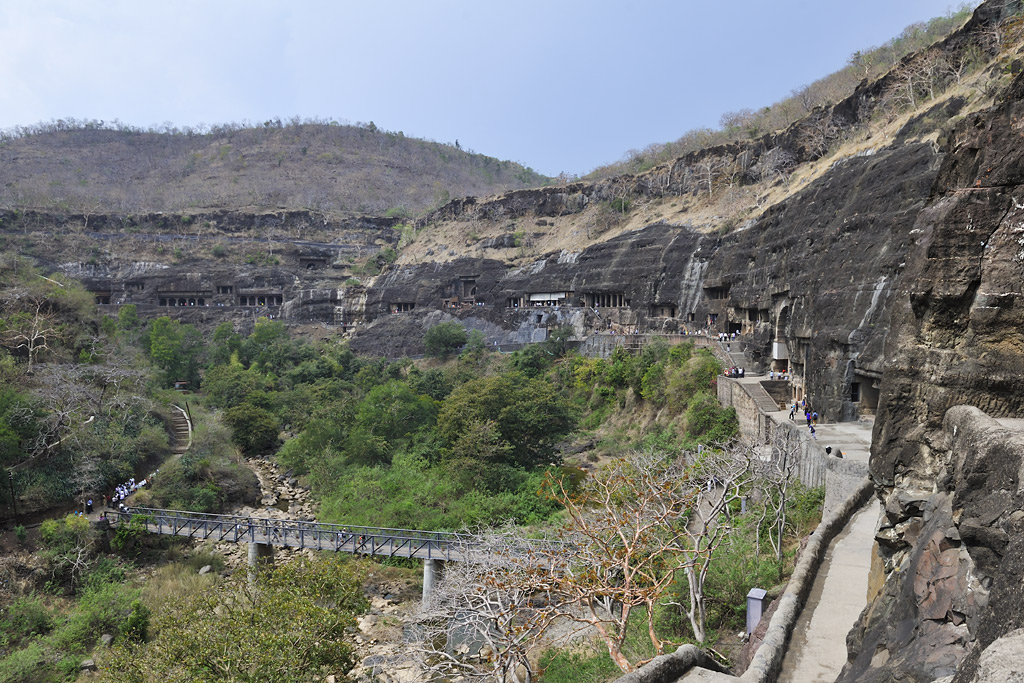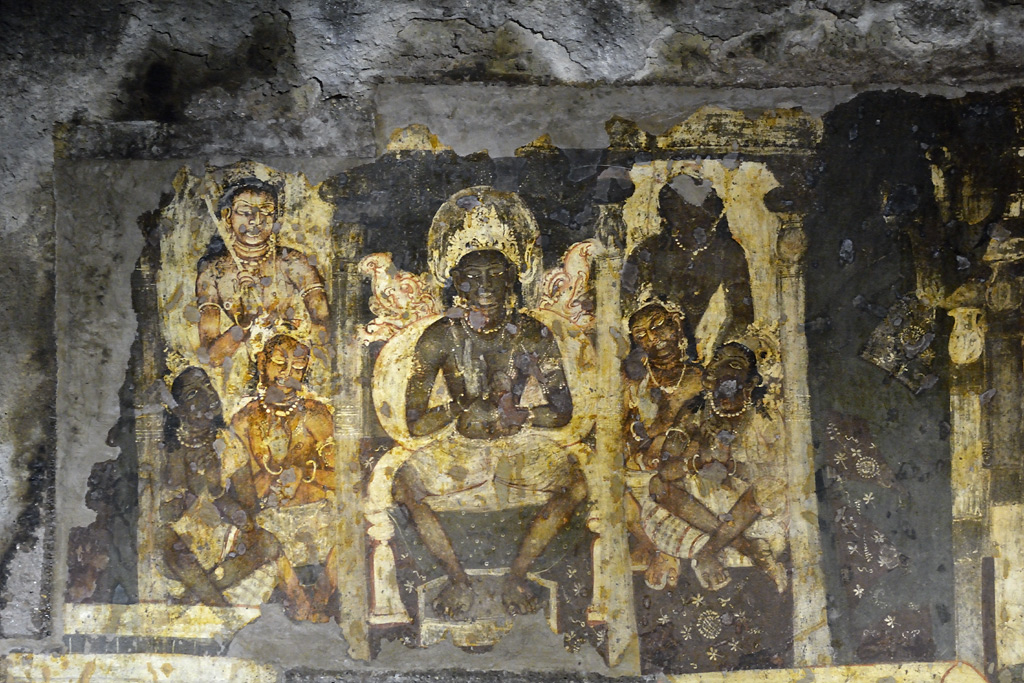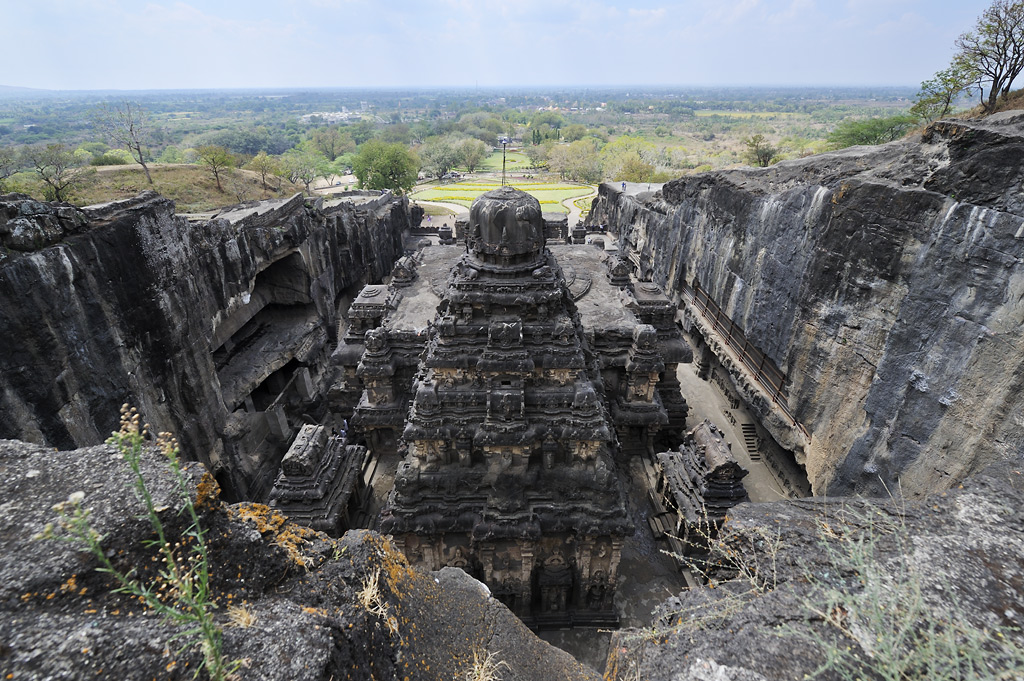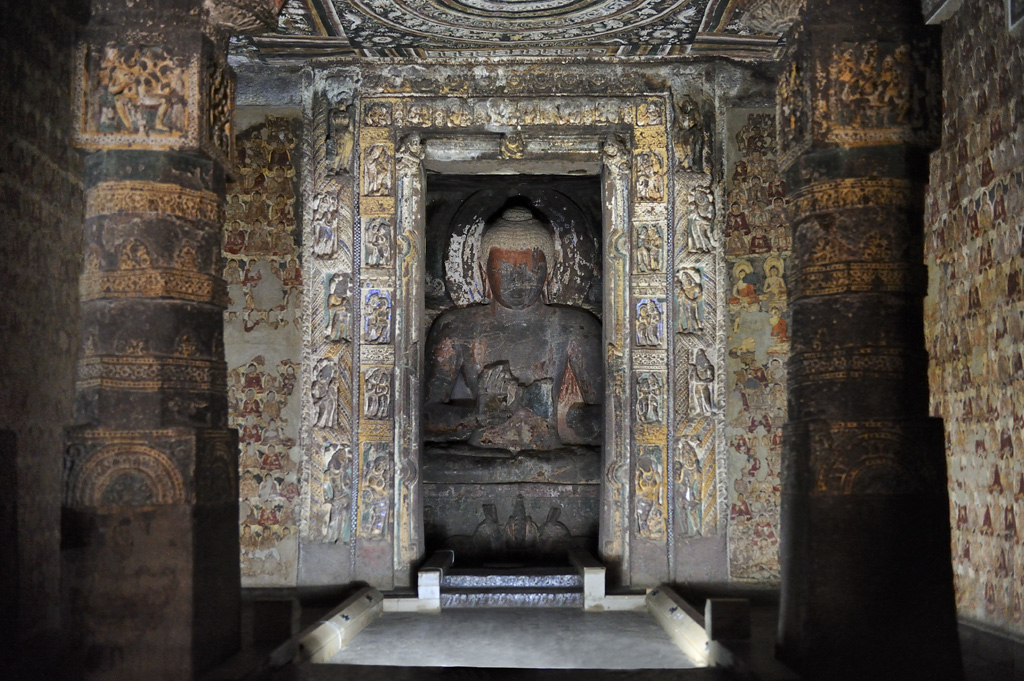_____________________________________________________________________________________________________________________________
[Home]
Gifts of the Gods
Diamonds and India – a Photo Documentary
(5/2015)
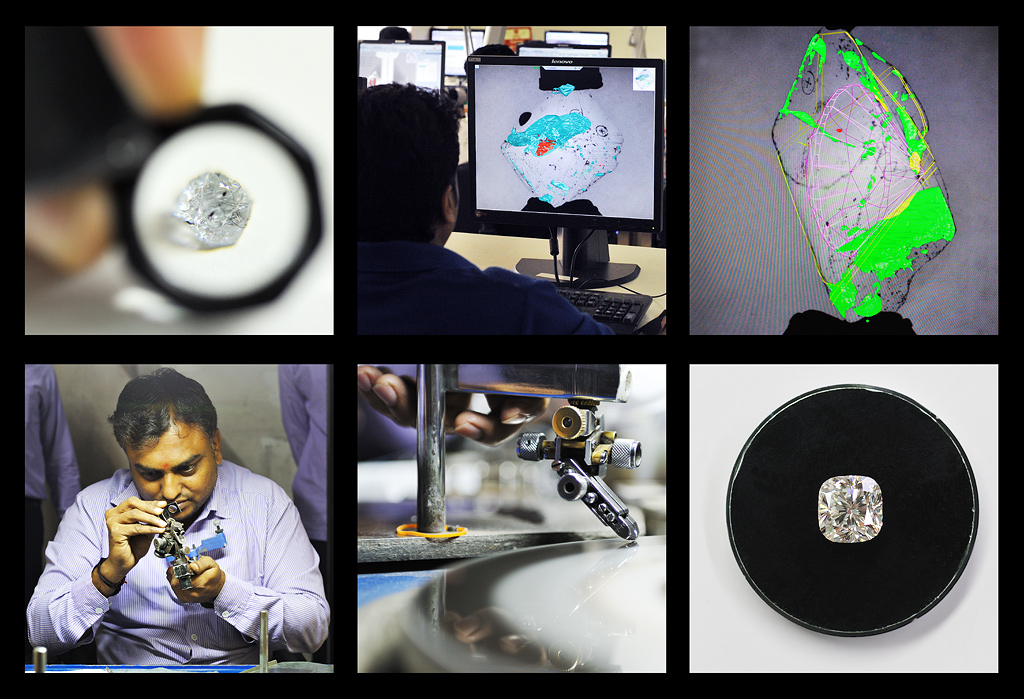
| About
95 per cent of the diamonds sold globally are cut and polished in the
Indian state of Gujarat, and that too in one single city, Surat! In
2011, India imported many more diamonds, which are mined worldwide
– although India herself hardly produces any diamonds. There
are
impressive numbers, and even more impressive facts behind this. As I
wanted to find out the reason for it, I travelled to, among others,
Surat and there I visited two different diamond-cutting and polishing
factories and interviewed several people. But as practically every
report begins with the origin of the word Diamond, therefore
if you please: the name diamond is derived from two Greek terms,
“diaphaínein”
for “transparent” and “adámas”
for “invincible”. The Indian languages Hindi,
Punjabi, Urdu, Gujarati and Bengali use the word “Hira”
for it, which is also one of the many names for Goddess Lakshmi, the
Goddess of Prosperity. Indians have used this word since the early
times, as diamonds have had a very long tradition in India. |
| |
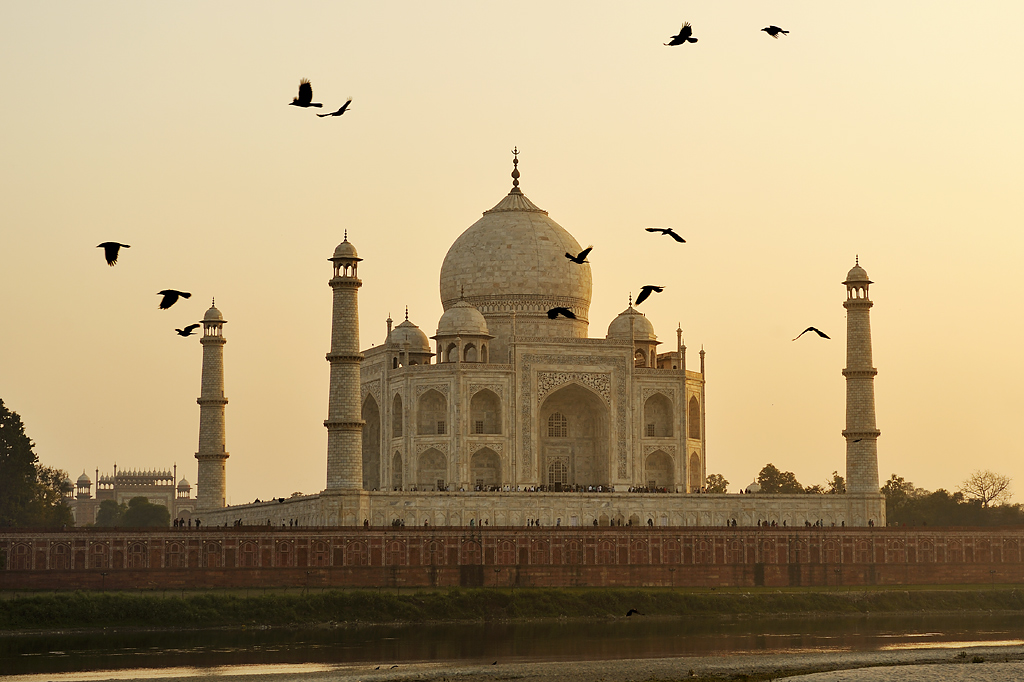 Taj Mahal, Agra. The materials for construction were brought from India and parts of Asia with 1,000 elephants. 28 different types of precious and semi precious stones have been inlaid in the marble. |
| The oldest written evidence of diamonds comes from Indian Sanskrit texts from 500 BC. The texts report diamonds to be liable to tax, whose value could only be appraised by trained experts, the “Mandaline”. Indians especially valued the brightness of the diamond, its transparency and its brilliance, especially when it was, in those days, not cut and polished in India. Besides this, the Sanskrit source also reported on the healing effects of precious stones prescribed as medicament when they were powdered. The ancient heroic epic, Mahabharata tells us about Gods, who knew about the immortality potion Amrita: A drink of pure water, herb juice, liquid gold and dissolved precious stones. It is not surprising that in Indian mythology precious stones played an important role and still continue to do so. According to the old Hindu doctrine, the seven visible colours in the rainbow corresponded to the seven cosmic rays, symbolizing the power of the Gods. Precious stones were deemed to be “conductors” of the seven important rays of the cosmos, whereby every stone by virtue of its colour reacted to the corresponding colour of the cosmic ray. Therefore, all the people are dependent on these cosmic rays, they pervade all lives and thus influence the existence of the people. |
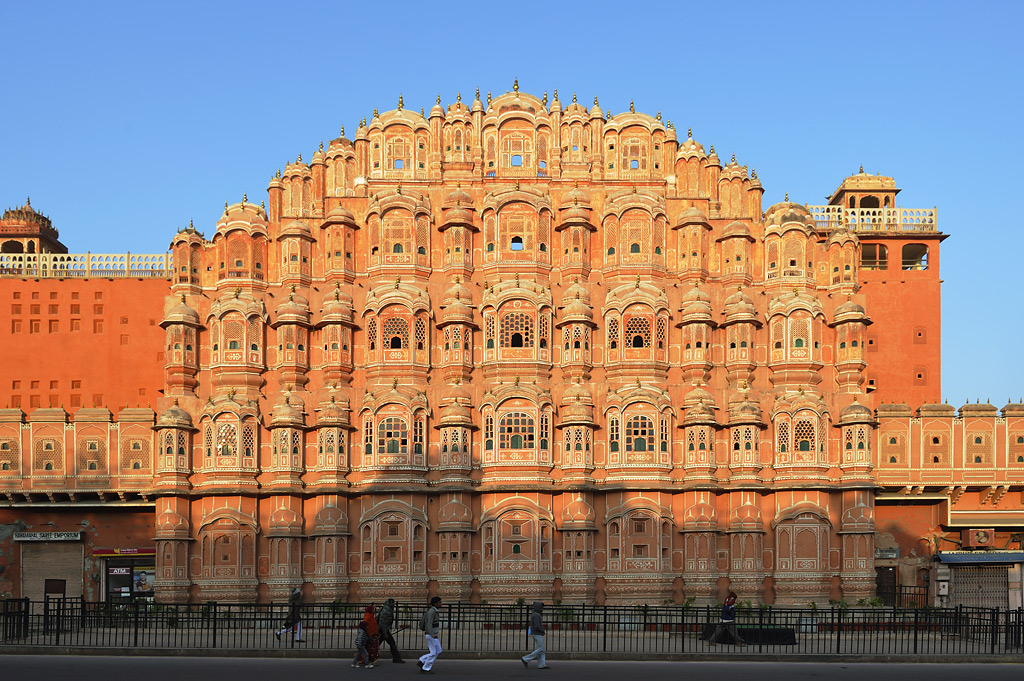 Palace of Wind (Hawa Mahal), Jaipur, Rajasthan. This building is a part of the enormous City Palace of the local Maharajas (Kings). The summer residence is today the symbol of the extravagant lifestyle of the Rajput Princes. It was built by Maharaja Sawai Pratap Singh in the year 1799. |
| The early embodiment of diamonds was Golconda, an old fortified and ruined city located near the city of Hyderabad. Golconda is an old Sanskrit name and translates as “Diamonds of the first water”. Some of the famous diamonds originate from here, such as the “Kohinoor”, the “Hope” and the “Regent”. The diamonds of Golconda were almost always clear and white stones obtained from riverbed deposits, which is why they were called, “River Diamonds”. That is why the term “River” has been given to all pure white diamonds in the current classification. Diamonds were processed in India since around 1350 AD. At that time however, the processing did not involve today’s customary facet cut. A well-formed raw diamond was more valuable because of its mystic-religious meaning than as piece of jewellery, as it was considered to be holy. The impetus to process a raw diamond was only to remedy its possible defects in order to get a nearly perfect raw diamond. For that a simple device was utilised, which till the last century was used in the Indian city Panna: the Diamond Chopping-Board. It consisted of a wooden arm with which a diamond was rubbed with another in a back and forth movement. If a diamond was rubbed against another long enough, it sometimes got cut by the other, but sometimes not! They found out thus, how varyingly hard the diamond itself is. |
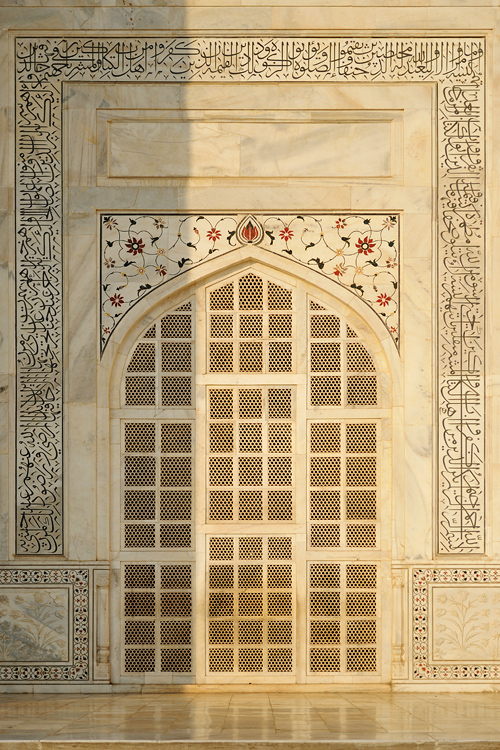 One of the entrance gateways of the Taj Mahal, Agra |
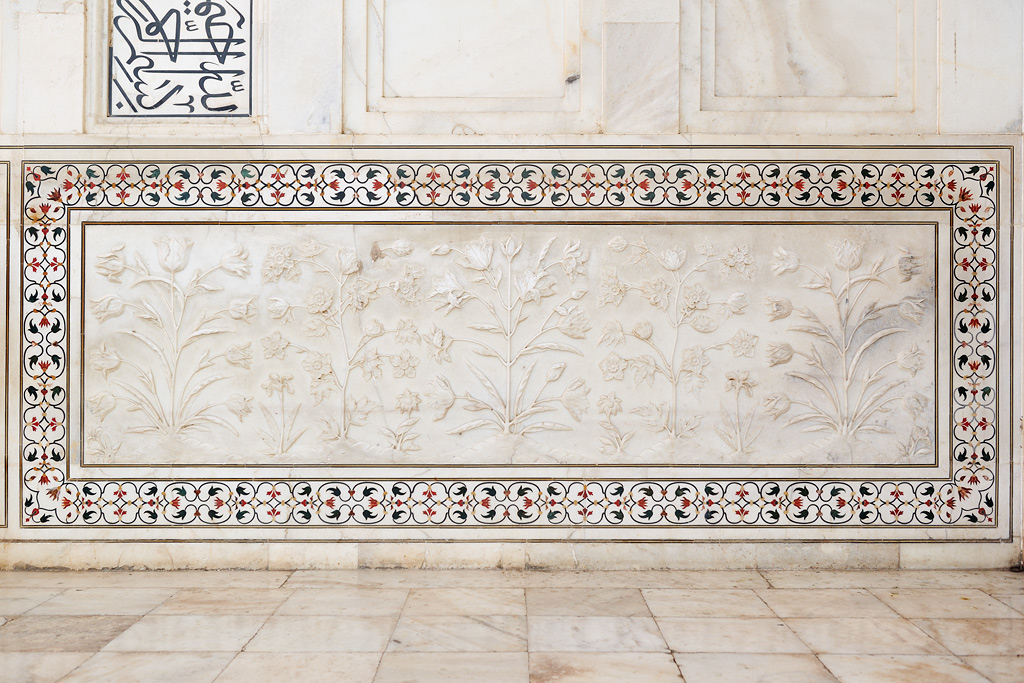 For the inlay of the structure,
precious stones were used in abundance, for example for the famous Taj
Mahal in Agra. What
looks from far like painted ornaments are actually from near, precious stones inlaid to within a millimetre into the marble. |
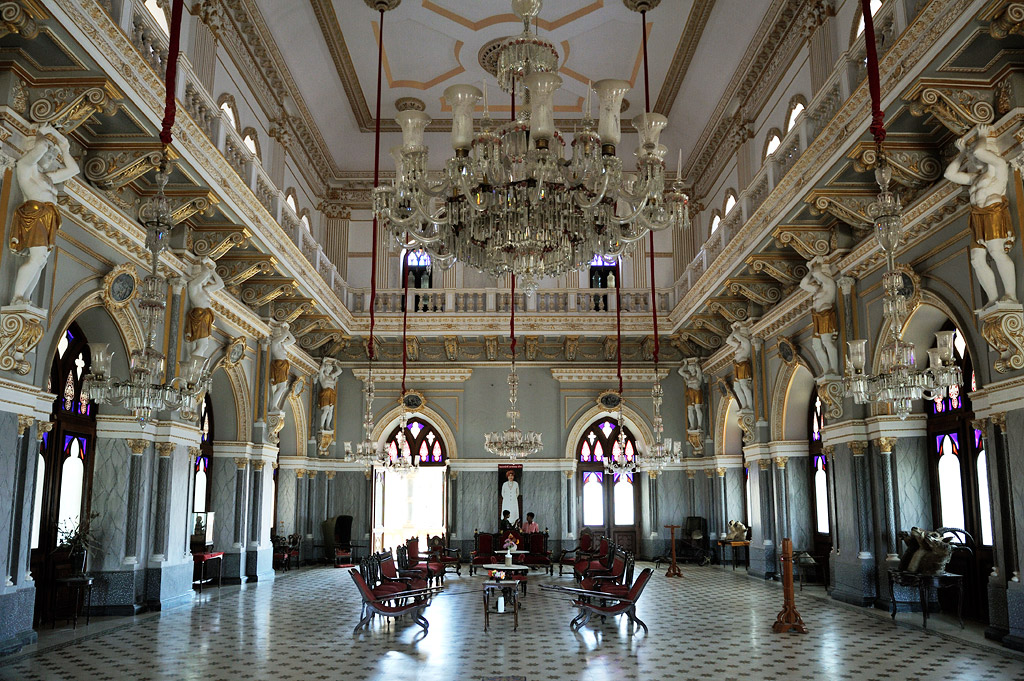
Ballroom in the Palace “Prag Mahal”, Bhuj, Gujarat. Stuffed tigers, lions, hippopotamus and bears.
|
“No country besides
India produces diamonds. Those that are brought into our part of the
world are only the remnants of
the finer and larger stones. As all the extraordinary stones are associated largely with Khans or other Kings and Princes. They possess effectively, the entire treasure of the world.” Marco Polo (1254 - 1324) |
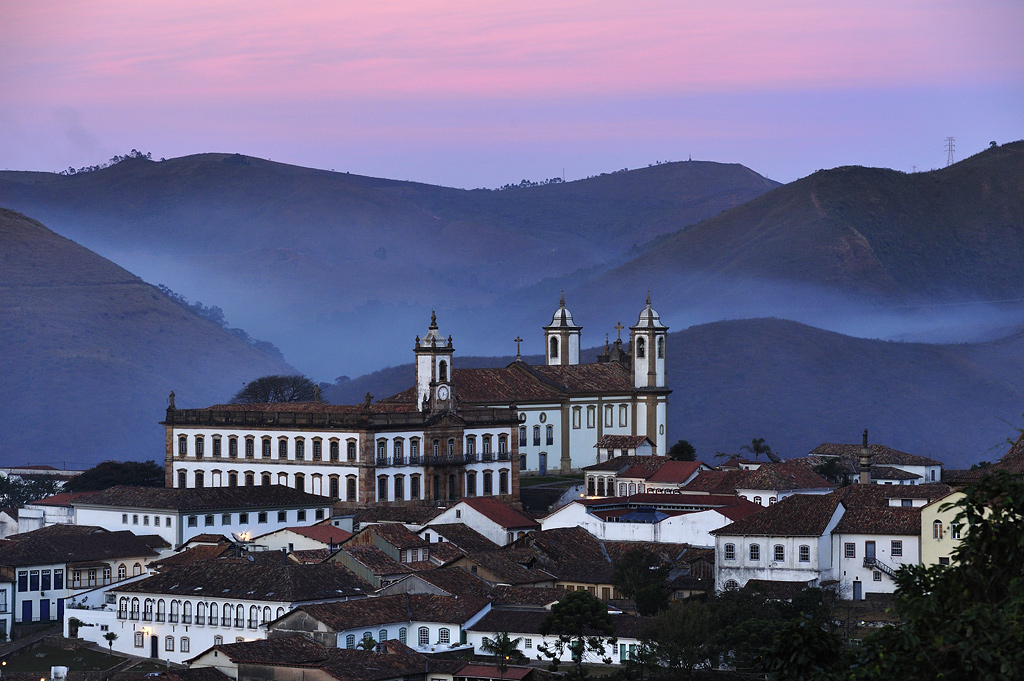
Ouro Preto – For 150
years diamonds came only from Brazil
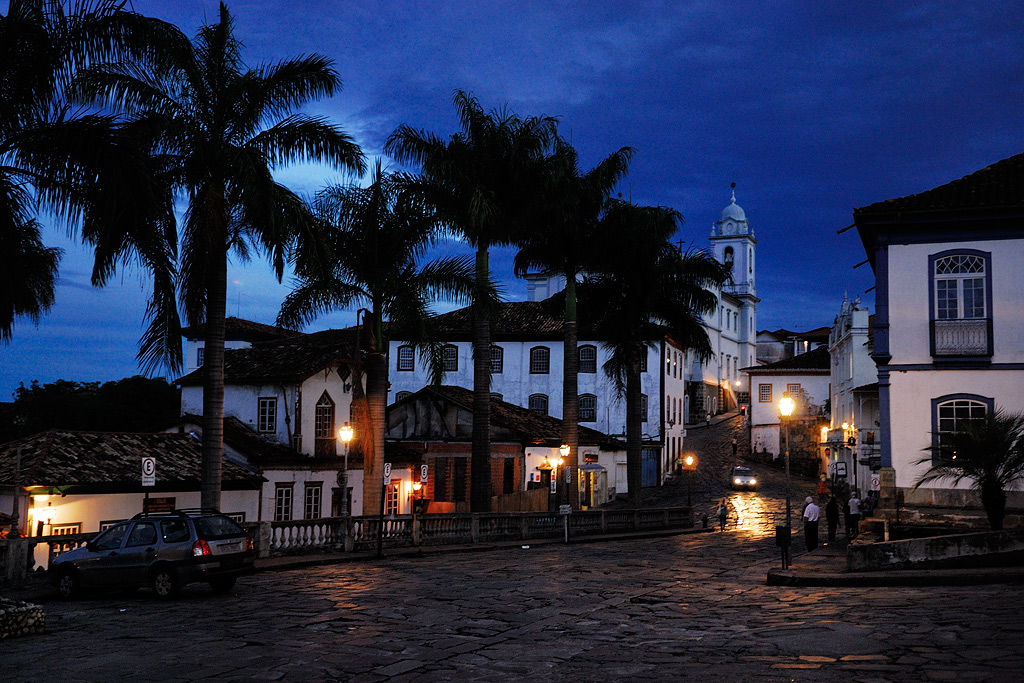

Diamantina, Brazil
| Just
as the Spaniards helped themselves to gold and silver in Central and
South America, the English too did the same from the temples and royal
palaces in their Indian colonies and sent a large quantity of diamonds
back to England. From there they were sold across the whole of Europe,
where the diamond at the beginning of the new era quickly rose to
become the most coveted of goods. When the diamond deposits were
exhausted in India in the 18th century, the first diamonds were
discovered in Brazil in 1725. For almost 150 years after that Brazil
dominated the diamond market till such time that its diamond mines were
depleted. The new diamond story started in 1866 with the discovery of
diamonds in South Africa, Kimberly. The businessman, Cecil Rhodes
founded the company De Beers Consolidated Mines Limited in 1888. In the
year 1990 the company with its mines controlled 90 per cent (!) of the
global production of raw diamonds. [More information on the diamond empire of De Beers... Open here] |
 Orthodox Jew studying the Torah 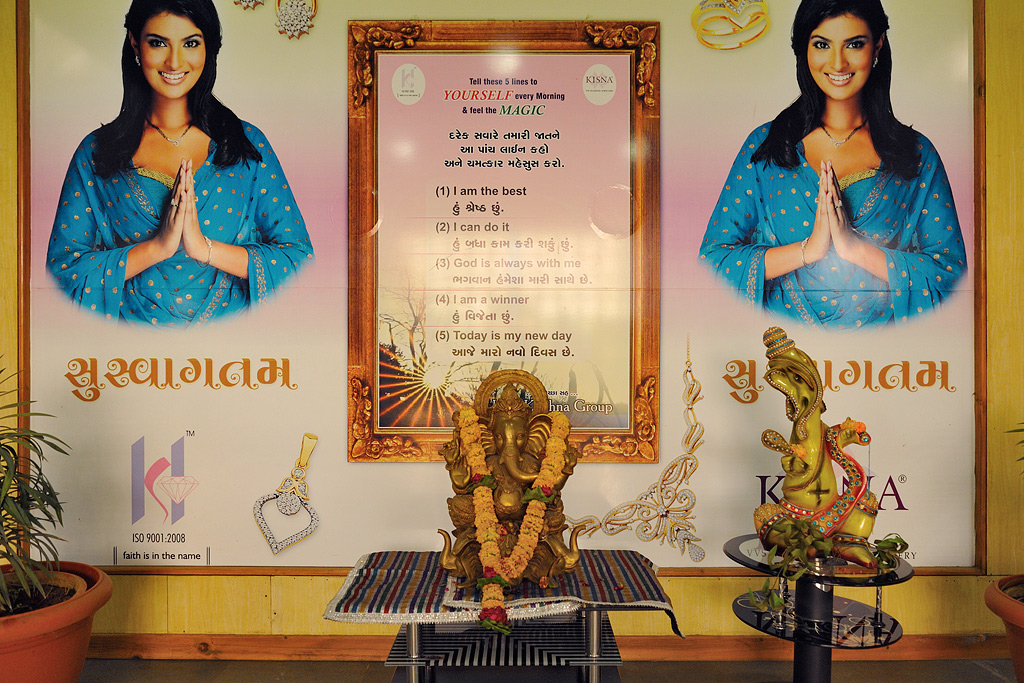 Ganesha in the entrance hall of the company Hari Krishna Exports |
Around
the end of the 1970s, the important producers of raw diamonds in the
world were South Africa, Congo and Russia. In 1982, a new and
productive mine with high quality diamonds was found in Botswana. The
global diamond market expanded considerably thereafter with the
discovery of mines in Australia in 1985, where mainly industrial
diamonds were encouraged, and in 2000 with new deposits in North
Canada. As the most important player in the diamond business, the company De Beers had to strongly withdraw its role as custodian of the diamond suppliers, because suddenly it was no longer the only source in the diamond market. However, Antwerp is still the main city of the global diamond business. For several generations the business was firm in the hands of the orthodox Jews – soon however, Indian businessmen gained a larger market position, taking over, virtually the whole cutting and polishing trade: In the last 22 years the number of the diamond cutters in Antwerp has gone down from over 30,000 to under 500. Earlier the Jews of the city earned a good livelihood thanks to diamond cutting. But today, several of them have been jobless for many years. For the youth amongst them however, there looms a shimmer of hope on the horizon, there is work in Europe’s second largest port after Rotterdam. Shipping, warehousing and communication are areas where their future is sketched out. In the meanwhile 95% of the raw diamonds are cut in India – here labour is cheaper, but there are also other interdependencies, because cheap labour can be found in other countries as well. This point was brought out clearly in my interview with Mr. Chandrakant R. Sanghvi, CEO of Sanghvi Exports International, when I asked him his viewpoint on, “Why Surat?”  |
|
“See, here we have no unemployment, on the contrary, many companies are looking desperately for people. The Gujaratis are hard working, frugal people, who are proud to be able to provide income for their families and to bring money back home. The people here do not drink alcohol, [Alcohol is in principle prohibited in Gujarat; Author's note] and they are punctual and honest people. They do not pay high rents as opposed to Mumbai, and are not stuck in traffic for hours. We have a very long tradition with precious gems, we know how one goes about it and the people here learn cutting and polishing fast. This place offers all the advantages for this business”. 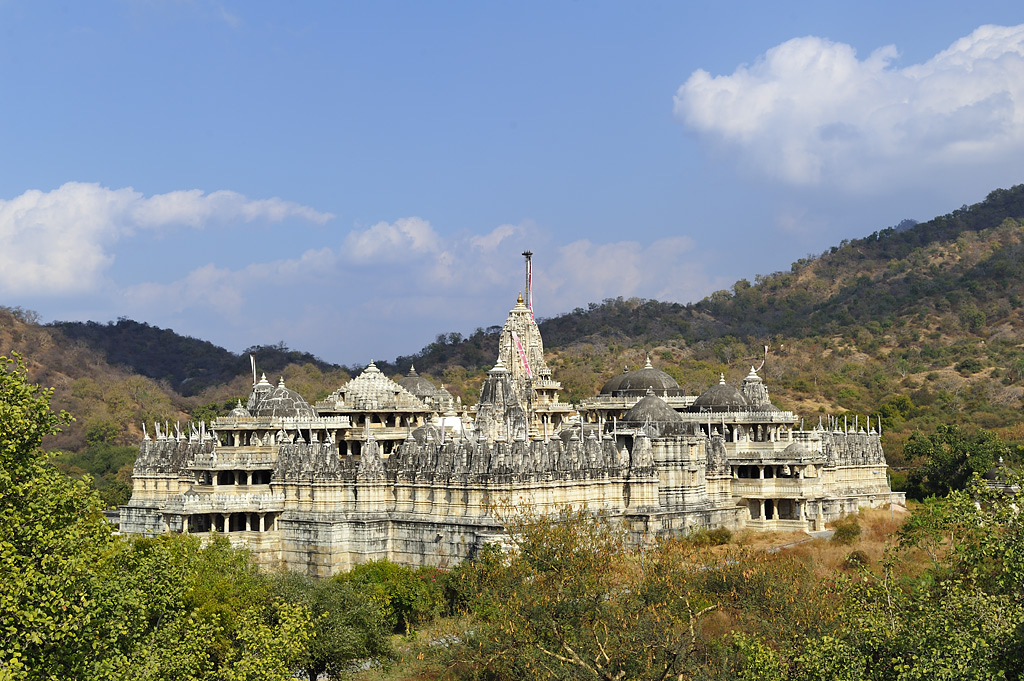 Jain Temple “Adinatha”, Ranakpur The world of diamond traders is as small as it is discreet. The members of the Indian religious community – Jain - to which Mr. Sanghavi also belongs, play a big role here. In the 1960s, they came from Palanpur and travelled to Antwerp. They were a part of one of the older castes of businessmen, who already had experience in the cutting of diamonds. They share one of the secrets of their success with their Jewish colleagues in the diamond business. Success is rooted in trust and close ties within families and networks; discipline and social control are the keys here that are applicable even today. A Jain bases his life on three principles: non-violence, truthfulness and renunciation from unnecessary possessions. These three principles form the foundation of Jainism. It is estimated that Jains meanwhile control over 60 percent of the global diamond trade. Over the years, besides diamond cutting and polishing, the Jains have got into the lucrative trade of precious stones. Thus there are always more Indians in this sector, reports an insider. [Chronology of the history of diamonds – Open here...] |
|
© Copyright: Photos and Text: Jochen Weber
[TOP]
